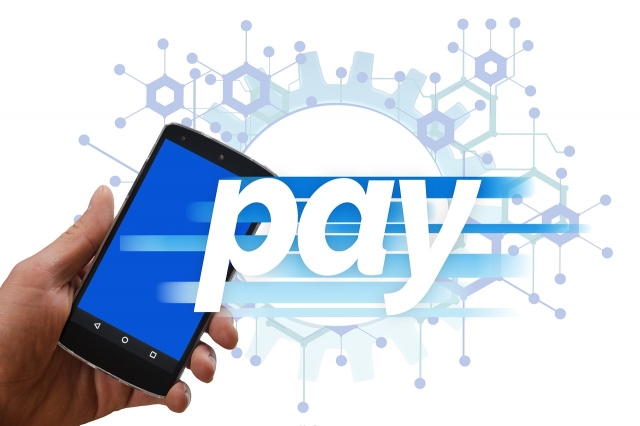Traditional business borrowing has long been a complex, time-consuming process. Small business owners would spend weeks gathering financial documents, visiting bank branches, and dealing with endless paperwork. These conventional lending methods created significant barriers, notably:
- Long approval times — 2-3 months waiting period
- Rigid requirements — Perfect credit scores and years of financial records
- Limited accessibility —Regular business hours only
- Complex documentation— Extensive paperwork and in-person meetings
The digital age has transformed the practice through embedded lending — a revolutionary approach that integrates financing directly into business platforms and services. This modern solution allows businesses to access funds exactly when they need them, right within the software and tools they already use daily.
Think of ordering supplies through a regular vendor platform and getting instant financing options at checkout. Forget about separate loan applications and switching between systems — simply access capital when you need it most.
Understanding Embedded Lending
Banking-as-a-Service (BaaS) has transformed business financing by allowing real-time credit solutions to be accessed directly within the platforms that businesses use on a daily basis. This innovative method incorporates lending capabilities into existing software, payment systems, and digital marketplaces.
Simple embedded business and financing have a couple of notable benefits; it powers real-time credit by offering:
- Direct access to financial data through API connections
- Automated credit assessment using live business metrics
- Instant lending decisions based on real-time performance
- Seamless fund disbursement within existing platforms
- Small and mid-sized businesses gain significant benefits from embedded lending solutions:
- Quick capital access
- Same-day funding availability
- No need to leave existing business platforms
- Reduced paperwork and documentation requirements
- Personalized lending options
- Credit limits based on actual business performance
- Flexible repayment terms aligned with cash flow
- Custom financing solutions for specific business needs
The friction-free nature of embedded lending eliminates traditional pain points such as separate loan applications, multiple platform logins, and lengthy approval processes. In other words, businesses can make instant purchasing decisions, capitalize on time-sensitive opportunities, manage cash flow gaps efficiently, and scale operations without financial delays.
APIs and Contextualized Financing
The magic of embedded lending lies in its seamless integration through API. These digital connectors enable businesses to access loans directly within their existing software platforms, from accounting systems to e-commerce dashboards.
E.g., when a business owner checks their inventory management system and notices they need to restock, instead of leaving the platform to seek financing, a “Get Financing” button appears right where they need it.
With just a few clicks, they can access pre-approved loan offers, review personalized terms, complete the application process, and receive funds (without switching platforms).
How is this possible?
Simply put, modern APIs create secure, instant connections between business operational data, financial records, and credit assessment systems. The real-time data exchange enables lenders to make informed decisions instantaneously.
Context-Aware Financing
Embedded lending solutions analyze business-specific contexts to offer relevant financing options.
In other words, they offer different models for different types of businesses. E.g., seasonal businesses may be offered flexible credit lines that adapt to peak seasons, eCommerce businesses — revenue-based financing based on sales performance, service providers — invoice financing tailored to payment cycles, and manufacturers — equipment financing with customized repayment schedules.
The system recognizes when a business might need funding and proactively presents suitable financing options. Think in terms of inventory purchases or expansion phases.
Evolving Repayment Models
Repayment models are also evolving. Many embedded lending solutions offer flexible, revenue-based repayments. That means businesses repay a fixed percentage of their sales — payments adjust with income. This reduces pressure during slow months, which can be life-saving for many small businesses out there.
However, there are some disadvantages. Embedded lending typically comes with higher interest rates than traditional loans. Additionally, it locks borrowers deeper into specific ecosystems, potentially reducing flexibility over time.
Still, the direction is clear. Embedded lending is becoming a default option for small businesses. As platforms collect more data and refine underwriting algorithms, loan offerings will become even more precise. For lenders, it's a new distribution channel. For platforms, it's a way to deepen engagement and monetize user bases. For borrowers, it's faster, simpler access to the capital they need.
A More Accessible Future for Small Businesses
Embedded lending is already so popular that it's highly unlikely it'll go anywhere. More and more businesses are quickly realizing the benefits of accessing financing directly within the platforms they already use.
It's only natural to predict that the demand for these solutions will keep expanding. Notably, embedded lending removes the barriers that have traditionally kept small businesses from accessing capital. Real-time credit and financing solutions offer small and mid-sized businesses the flexibility and agility they need to succeed.
This also means that traditional banks will be forced to rethink their lending models. Stay tuned for future prospects!






